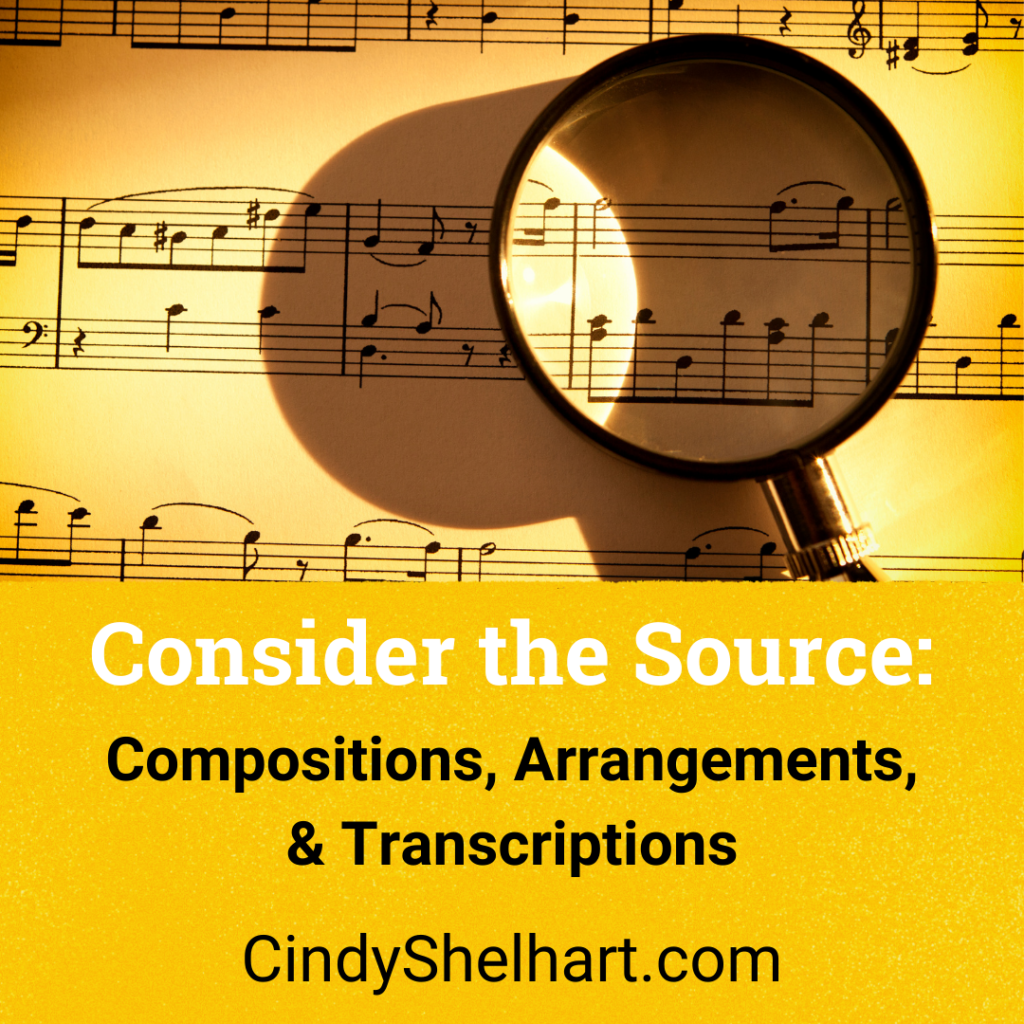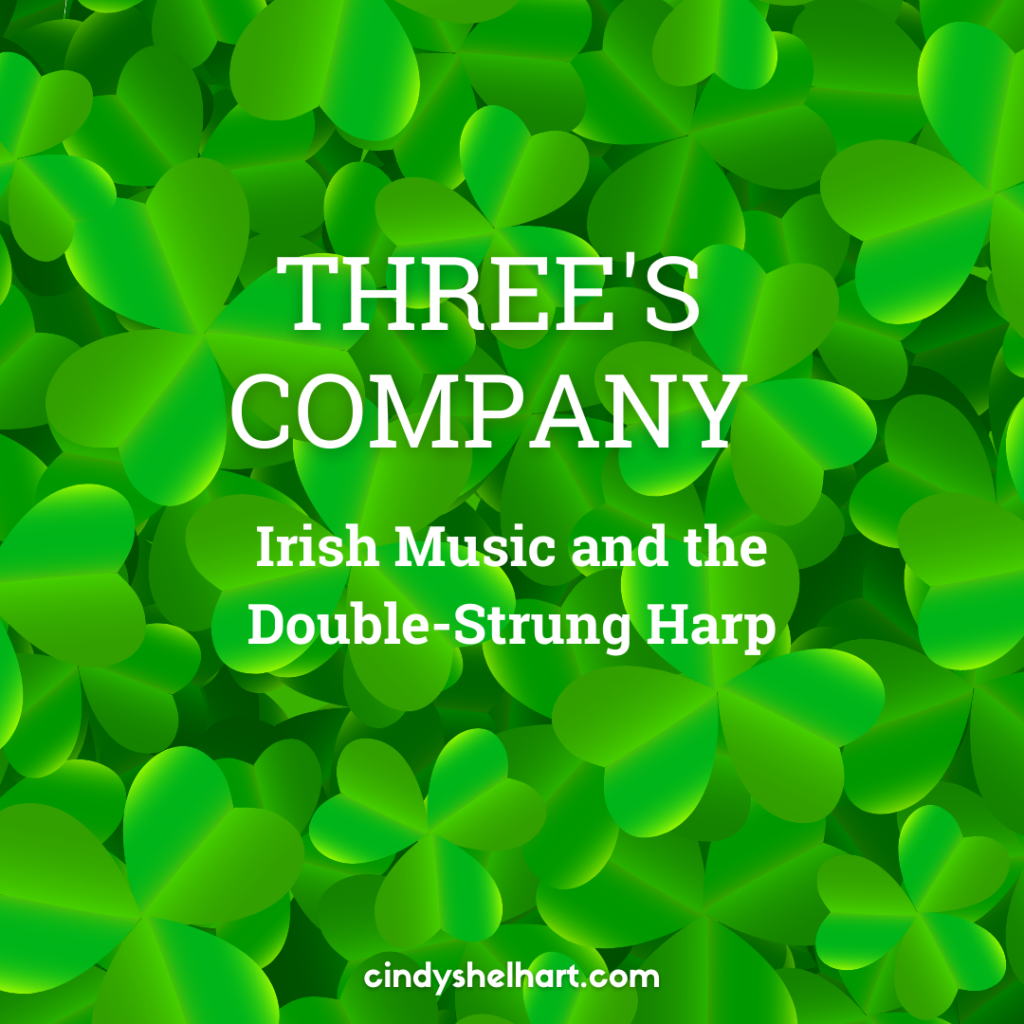Hi, I’m Cynthia Shelhart. You can call me Cindy. And it’s time for some #DoubleTalk. Double-strung harp, that is!
Welcome back to our FAQ series on the double-strung harp. Last time, in Episode 5, we took a workshop view to explore all kinds of music that you can play on double-strung harp. (Did you miss the episode? Hey, we missed YOU. Make sure you’re subscribed for future episodes, OK?)
This time in Episode 6, it’s the magic moment you’ve all been waiting for. Your double-strung harp is on its way, or maybe it’s even already arrived at its new home. It’s time to take those first steps—and it can be easier than you think. Today we’ll take a look at “How do I get started playing double-strung harp?”
Technique
Let’s start with some good news about technique.
If you already play single-row harp, if you already play lever harp with a single row of strings, you’re halfway there. The same familiar technique that you use for single-row harp is the same that you use for double-strung harp: the same placing for your fingers, plucking the string, closing and replacing, fingering conventions, these are all the same. So, you’ve already made a great start there.
And an ideal place to start, I think, is if you already play at an intermediate level—if you can play independent parts with both hands together at the same time. The double-strung harp has enough new and different things about it, for your hands and your eyes and your brain, that it helps if you can get some of the other stuff out of the way, the basic harp technique that you know from single-row harp. And if you can play hands together playing independent parts, well, you’re just putting the ball in your court.
But if you’re brand new to harp, the double-strung harp IS still doable; you’ve just got a little bit more to cover. I’d recommend harp lessons to get you up to speed with basic harp technique. And you CAN do this. I would recommend doing a little research, and making sure that you find the right teacher to help you out with both things at the same time. (And I’ll have a little bit more on that later.)
Single-Row & Familiar Repertoire
Speaking of familiar stuff, you can use familiar single-row repertoire to help you get used to your double-strung harp: not just technique, but also the music that you already play.
This helps you get used to the feel and the look of 2 rows of strings. And you might be surprised to know that when you’re playing double-strung harp, it’s not just all overlapped in the same range all the time. It also includes playing hands separated, with right hand high in the melody range, and left hand a little lower, like the single-row harp. So this will also fit right in with playing double-strung harp, if you bring your single-row repertoire over.
This also helps you get used to the sound of 2 rows. If you do a slight move of your left hand up an octave, so that you can play the melody, the same right hand melody, in the left hand, at the same time, you’re actually playing in true unison. And this is something that you can’t do on a single-row harp; you have to have a double- or triple-strung harp to be able to do that. So the two unison rows of strings allow you to play the same thing in the same range. And this is a great way to get used to the sound of 2 rows.
“Double Vision”
Now there’s one more thing that everybody gets a little bit concerned about when their double-strung harp arrives, and that’s something that we nickname “double vision.” And this is a temporary disorientation from looking at the two rows of strings, instead of one. And this DOES go away with time; please be patient with yourself, but also know that the time that this takes to go away varies with individual harpists. So for you, it may be something that goes away very quickly, or it may take you a little bit of time. But again, please be patient with yourself.
The main thing that we’re looking to do is to decrease your visual dependence on the strings. And there are some things you can try:
- One is to focus on 1 row of strings at a time. You may, for example, want to focus on the left-hand row of strings (and I’m speaking about a harp on your right shoulder); the left-hand row of strings would be closer to your head and, by extension, your eyes. Or, it might work out better if you look at the right-hand row. That means that you’re looking at the row of strings that you usually play the melody on, and this is closer to the same plane as your eyes, at eye level. So, one row might work a little better than the other on a given day. And sometimes you need to change that around a little bit, depending on the piece, or depending on the day.
- You could also try playing lower than usual on the strings, temporarily. Usually, we play in the middle of the strings (so that we have the best sound, and activate all the harmonics on the strings). But, temporarily, it’s totally okay if you want to experiment with playing a little bit lower on the strings. It might be easier to see the strings if you look at them with the soundboard nearby.
- You can also experiment with angling the harp differently on your shoulder, so that the peripheral vision that we use for looking at the harp strings (you know, not looking with your neck cranked around to cause it some pain), we want to make sure that you’re using peripheral vision like you do on any other harp. But, maybe angling the harp a little differently on your shoulder can help you find that “sweet spot” for your peripheral vision.
- You can also try changing your environment. You can change your lighting, the floor covering, maybe putting a different piece of fabric or a rug down in the area where you’re looking down at your strings. There might be other background distractions. Try changing your environment around a little bit.
- And finally, you could actually try playing with your eyes closed from time to time, to help develop your sense of touch and your muscle memory to get used to the distance between the 2 rows of strings, and the distance between the strings themselves. Many Welsh triple harpists, just like their contemporaries who played wire-strung harp (from Ireland and Highland Scotland), were also blind. So they played without the benefit of being able to see the strings. And maybe that might work for you, to try it out a little bit while you’re getting accustomed to the look of the 2 rows of strings. And your ears will tell you when it’s right.
Make Mine a Double & Working Together
So, if you found today’s tips helpful, I’ve got a lot more music and information for you in my best-selling method book for double-strung harp, which is called Make Mine a Double. It’s available on my website, CindyShelhart.com, along with other music books, sheet music, and CDs—all for double-strung harp. And that’s also where you can contact me if you’re interested in working directly in 1:1 lessons, or small group workshops. I’d love to hear from you.
Wrapping Up
So whether your double-strung harp is on its way, or that new harp is just waiting patiently for some love in your harp room, I hope that these tips on getting started are helpful for you.
Thanks for joining me today for Episode 6 of the double-strung harp FAQ series. If you liked what you heard today, make sure you subscribe, so you can be notified of future episodes. And if you want to be the first person to get some more Double Talk, go to my website, CindyShelhart.com, and sign up for my mailing list.
And you definitely want to stay tuned and make sure you’re subscribed for next time; I’ve got a whole new double-strung harp series coming up for you, and you’ll find out all about it in the next video. You won’t want to miss it. See you next time!



